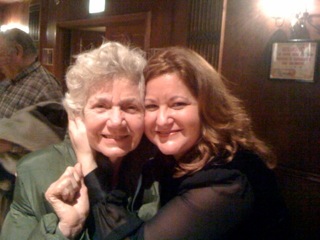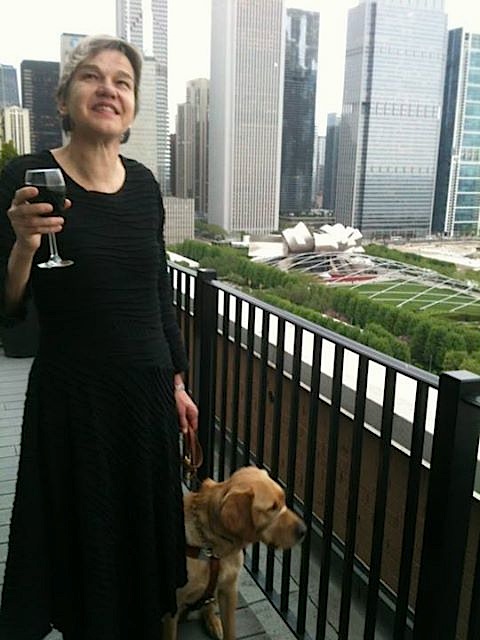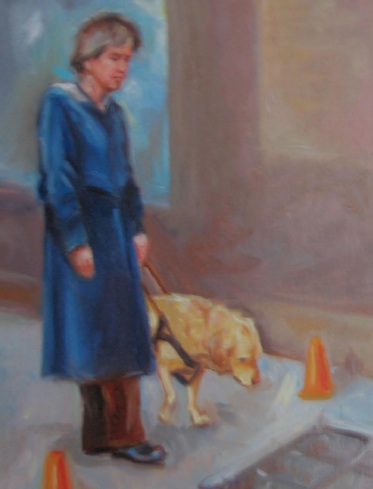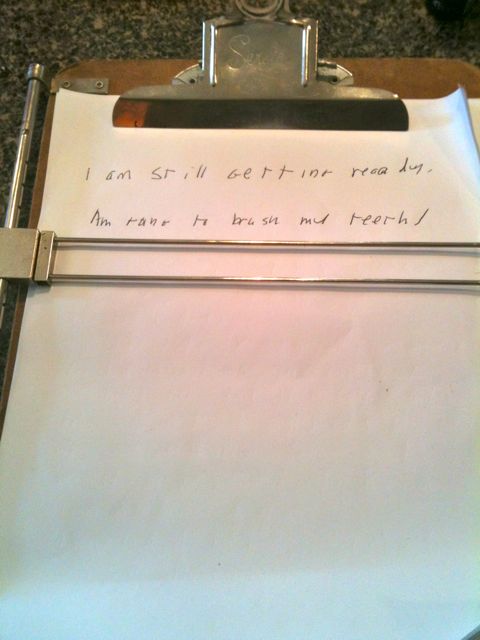The naked truth
June 1, 2013 • 13 Comments • Posted in blindness, careers/jobs for people who are blind, Uncategorized, writingI started modeling nude for art students the year I turned 40. The unemployment rate of people who are blind was – and still is – around 70%, and back then the University of Illinois art department was the only place willing to hire me.

My Seeing Eye dog Dora posed with me, and, in the end, most of the drawings were just of her.
Taking my clothes off for college students wasn’t exactly a dream job, but it did have some benefits: standing still for 50-minute poses gave me lots of time to think about my writing, how to reformulate a lead, how to get across a certain idea. I composed my very first published essay in my head while standing naked on a tabletop, and once I got dressed again I rushed home to type the story into my talking computer. Nude Modeling: Goin’ In Blind was picked up by Alternet and published in alternative newspapers all over the country. The success of that essay led to my work on National Public Radio, my one-minute stint on The Oprah Winfrey Show, and, in many ways, the publication of my memoir Long Time, No See.
Last Saturday the New York Times published an essay by another writer who took a job modeling nude for art students. I found Rachel Howard’s essay difficult to read. Not that it was poorly written — I was just jealous I hadn’t thought of writing it myself. In the essay, Ms. Howard describes the short one or two-minute “gesture poses” art instructors ask models to use at the beginning of each class. Quick poses provide students some time to warm-up, and back when I was modeling that idea inspired me to make a habit of writing short email messages before getting into longer pieces of writing. I still do this today — checking the grammar and spelling on the short messages I send out early in the day warms me up for the book writing I do later.
Reading Rachel Howard’s New York Times essay showed me that gesture drawing affected her writing life a little differently:
I was, during those early days of art modeling, struggling to find the life in my stylistically choppy novel. At home alone, I heard the drawing instructors’ voices.
Find the gesture. Don’t worry about the details. What is the essence of that pose? I left my laptop at my desk and moved to the other side of the room to sit on the floor with my notebook.
Funny. The same short poses that inspired me to start my morning working out details (checking for spelling mistakes, watching my grammar) compelled Rachel Howard to do the opposite — to sit on the floor with a notebook and quit worrying about words and sentences. She concludes, “Because really, before we put a word or a mark on the page, both writers and artists must first step back and see. And seeing is not simple.”
Can’t say I agree with that step-back-before-you-write-a-word-on-the-page notion –I tend to write first, step back and listen to what I’ve written, and then work it out from there. As for her last line, “seeing is not simple,” though? I couldn’t agree more.




